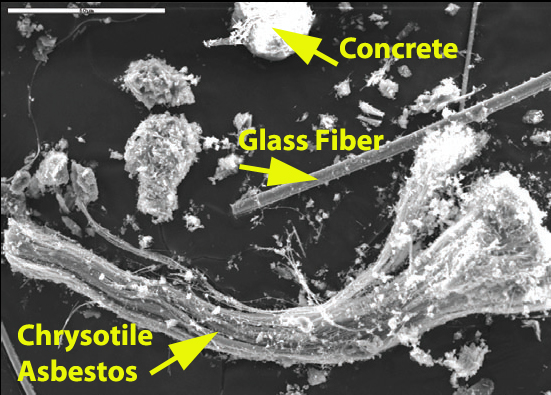9/11 dust study, gypsy-moth caterpillar killer, and hummingbird courtship
 Studying the 9/11 WTC dust: Coinciding with the tenth anniversary of the September 11, 2001 terrorist attacks, the United States Geological Survey (USGS) recently published a blog highlighting the agency’s study of the environmental and potential health risks of the massive dust cloud that swept across New York City as a result of the collapse of the World Trade Center.
Studying the 9/11 WTC dust: Coinciding with the tenth anniversary of the September 11, 2001 terrorist attacks, the United States Geological Survey (USGS) recently published a blog highlighting the agency’s study of the environmental and potential health risks of the massive dust cloud that swept across New York City as a result of the collapse of the World Trade Center.
The dust was particularly dense, coating outdoor surfaces in a layer of powdered material up to three inches thick. It also penetrated doors, windows and ventilation systems, contaminating apartments and office buildings alike. The Environmental Protection Agency and the U.S. Public Health Service requested that USGS examine the dust to identify components that might pose a human health threat to the thousands who inhaled it that day and subsequent days
USGS found that the dust contained higher amounts of lead, zinc, antimony, copper, and other elements of building materials than found in natural soils. The team also found the less dangerous variety of asbestos–chrysotile asbestos–in most samples at higher levels than what is found in urban particulate matter. The materials found were deemed dangerous enough to indicate a potential health threat and USGS scientists consequently advised that clean-up be conducted with appropriate respiratory protection and dust control measures.
USGS scientists also found that dust indoors was highlight caustic and could be chemically reactive with moisture, including eyes, nose, and lungs. However, rain and other elements helped neutralize the alkalinity of dust outside.
Clever caterpillar killer: Scientists have recently discovered how a virus manipulates an invasive species of caterpillar. The gypsy moth caterpillar larvae is renowned for damaging roughly a million acres of forest in the U.S. each year. However, the baculovirus has infiltrated the caterpillars, taking advantage of their insatiable appetites. The virus has become so effective that the U.S. Department of Agriculture sprays it on trees to help control gypsy moth outbreaks.
According to the study’s lead author, Kelli Hoover, an entomologist at Pennsylvania State University, the virus works by altering the gypsy moth caterpillar’s behavior. Once infected with the virus, the caterpillars climb to elevated positions and die. Subsequently, the body cavity of the caterpillar is converted into millions of virus particles as well as an enzyme that causes the caterpillar’s exoskeleton to disintegrate. The “liquefied” caterpillar then “rains” onto the leaves below, which other caterpillars eat, further spreading the virus.
The researchers claim that knowing precisely how baculovirus overwhelms the gypsy moth could help scientists develop more potent strains of the virus and determine when in the moth’s life cycle it is most vulnerable to infection. Read more at: “How a clear virus kills a hungry caterpillar”
Hummingbird heart-felt flutters: A new study by Christopher Clark of Yale University reveals the source of a sound their tails make during courtship. The study reveals that air flowing past the tail feathers of a male hummingbird makes his tail feathers flutter, thereby generating loud sounds. These sounds only appear during courtship, according to the study.
Clark’s research indicates that when diving during their courtship dances, male hummingbirds exceed their usual flight speeds. The faster a male hummingbird dives, the louder the sounds generated by his tail feathers become. Clark theorizes that the louder flutters may send a signal to the females of increased flying prowess and consequently, a more physically fit mate. Read more at: Hummingbirds All A-Flutter During Courtship
Also, a discovery of Dinosaurs in the Washington, DC area and hybridized butterflies